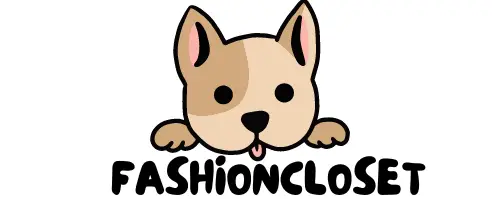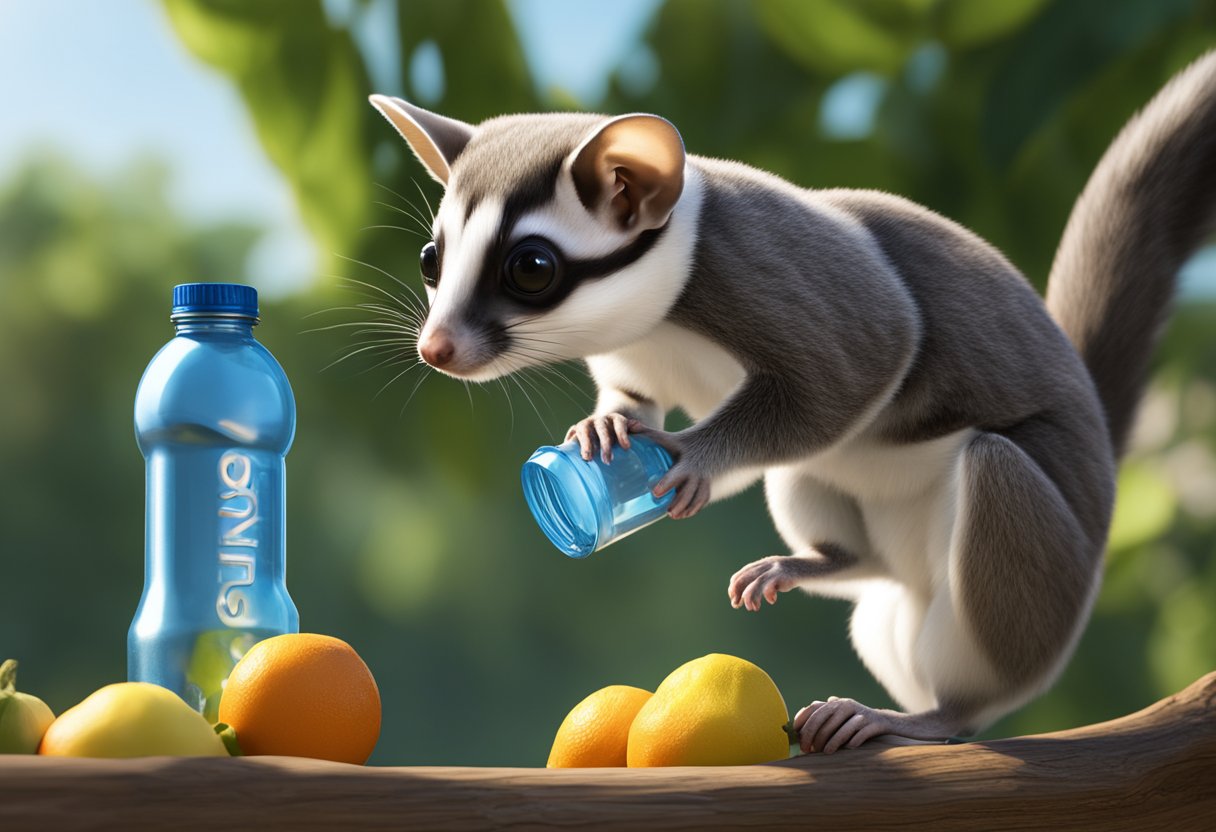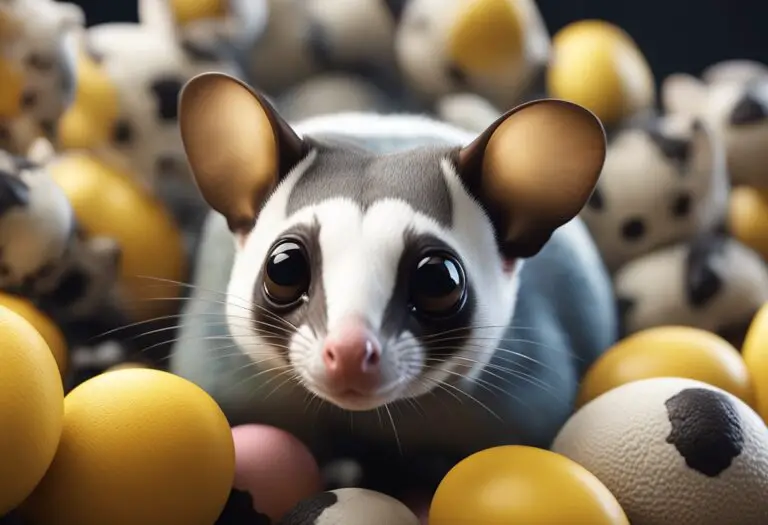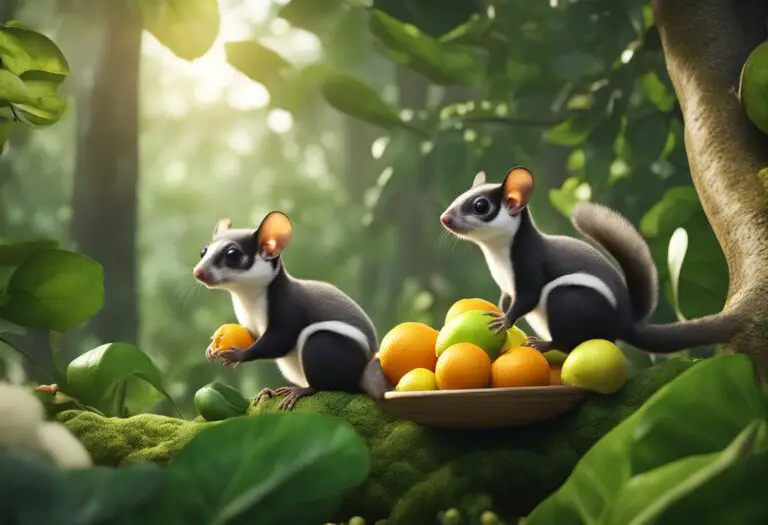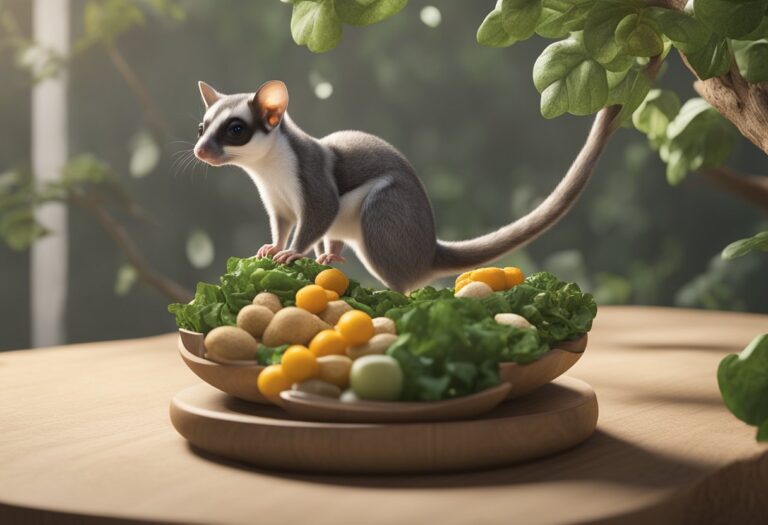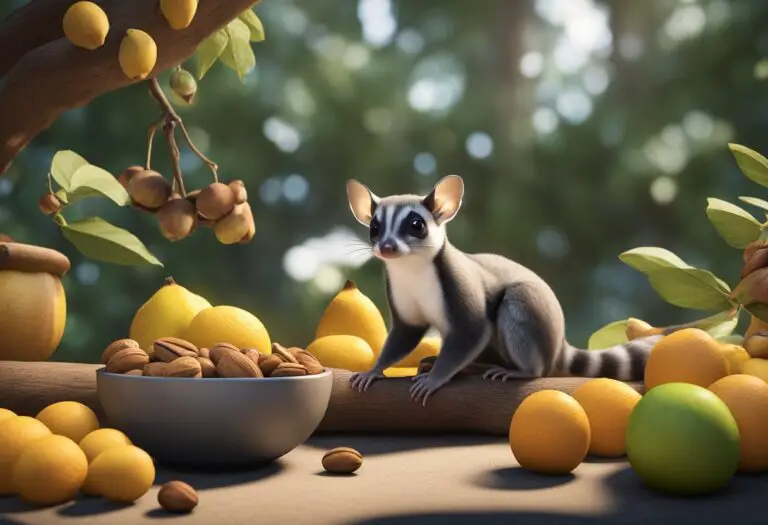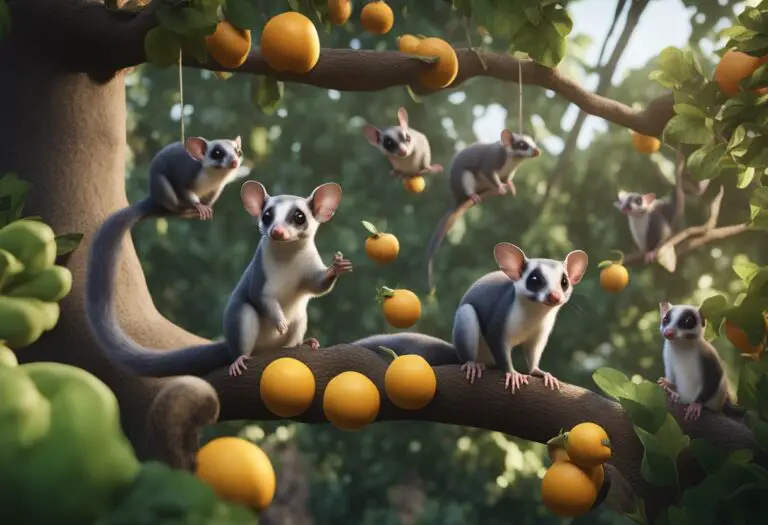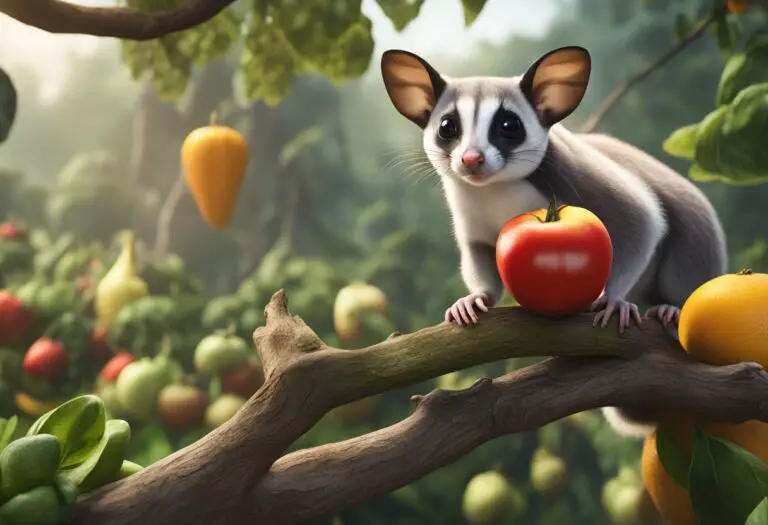Hydration Tips for Sugar Gliders: Keep Your Pet Happy
As a devoted sugar glider owner, I understand the importance of providing proper hydration for these delicate and energetic creatures. Watching my own sugar glider, Peanut, become lethargic and disinterested due to dehydration was a heart-wrenching experience that no pet parent should have to endure. That moment compelled me to dive deeper into understanding the hydration needs of these fascinating marsupials, and I’m eager to share the insights I’ve gained to help other sugar glider enthusiasts keep their furry friends happy and thriving.
Sugar gliders are small, active animals that require meticulous care to maintain their overall well-being. Maintaining adequate hydration is crucial for their health, as dehydration can lead to a host of serious issues. In this comprehensive article, we’ll explore the various aspects of sugar glider hydration, from water sources and signs of dehydration to hydrating foods and electrolyte supplementation. By following these guidelines, you can ensure your sugar glider remains well-hydrated and thriving.
Introduction to Sugar Glider Hydration Needs
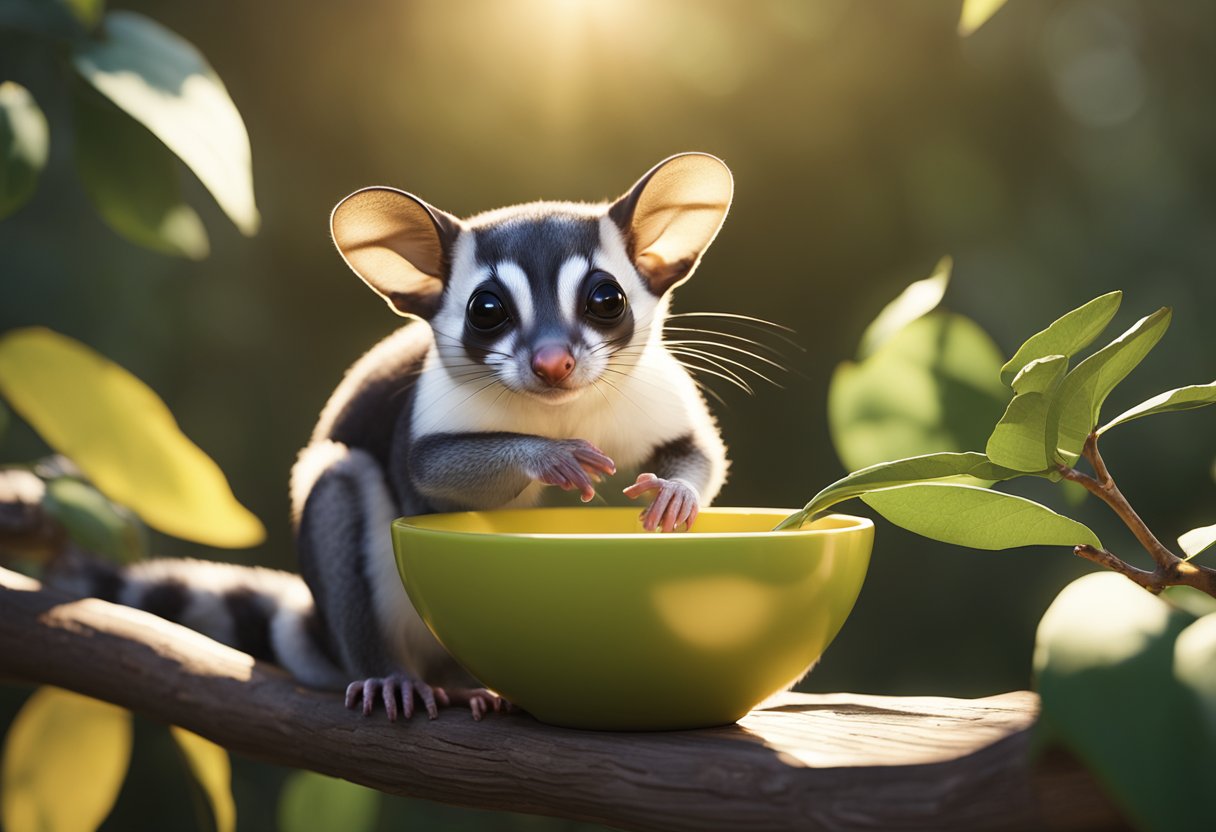
Sugar gliders, native to Australia and parts of Indonesia, are arboreal animals that require a balanced diet and adequate hydration to thrive. Proper hydration is essential for various physiological functions, including regulating body temperature, aiding digestion, and supporting organ function. Understanding the importance of sugar glider hydration needs and the water sources available to these animals in their natural habitat can help owners provide the best care for their pets.
Why Proper Hydration is Crucial for Sugar Gliders
The importance of proper hydration for sugar gliders cannot be overstated. These small, active marsupials rely on adequate water intake to maintain their health and well-being. Dehydration can lead to a host of issues, including organ dysfunction, impaired thermoregulation, and compromised digestion. By ensuring their sugar gliders are properly hydrated, owners can help prevent these complications and support their pets’ overall wellness.
Understanding Sugar Gliders’ Natural Habitat and Water Sources
In their native habitat, sugar gliders have access to a variety of natural water sources, such as dew, rain, and the moisture content in their food. These arboreal creatures rely on these sources to meet their hydration needs. By understanding how sugar gliders obtain water in the wild, owners can better replicate their pets’ natural environment and provide suitable water sources in captivity.
Providing Fresh Water Sources for Sugar Gliders
Sugar glider owners should provide their pets with clean, fresh water at all times. This can be achieved through the use of water bottles or bowls, both of which have their own advantages. Water bottles are less likely to become contaminated, while bowls allow sugar gliders to drink more naturally.
Types of Water Bottles and Bowls for Sugar Gliders
When selecting a water source for your sugar glider, you can choose from a variety of water bottles and bowls designed specifically for small pets. Water bottles offer the convenience of a self-refilling system, reducing the risk of spills and contamination. Bowls, on the other hand, allow sugar gliders to drink more instinctively, as they can dip their paws and lap up the water.
Cleaning and Maintaining Water Containers
Regardless of the water source you choose, it is essential to clean and maintain these containers regularly to ensure the water remains clean and free of bacteria. Proper cleaning and disinfection techniques will help prevent the transmission of diseases and keep your sugar glider hydrated. Thoroughly wash and sanitize the water containers using a pet-safe disinfectant, and replace the water frequently to provide your sugar glider with the freshest, cleanest drinking water possible.
| Water Bottle Features | Water Bowl Advantages |
|---|---|
| Less likely to become contaminated | Allows more natural drinking behavior |
| Self-refilling system reduces spills | Provides visual cue for water availability |
| Convenient for owners | Easier for sugar gliders to access water |
Signs of Dehydration in Sugar Gliders
Recognizing the signs of [dehydration in sugar gliders] is crucial for their health and well-being. Sugar glider owners should be vigilant in monitoring their pets for any physical or behavioral changes that may indicate a lack of proper hydration.
Physical Symptoms to Watch Out For
Some of the physical symptoms of [dehydration in sugar gliders] include sunken eyes, dry or tacky gums, loss of skin elasticity, and lethargy. These physical cues can signify that a sugar glider is not receiving enough water and may be experiencing the effects of fluid imbalance.
Behavioral Changes Indicating Dehydration
In addition to physical symptoms, [behavioral changes indicating dehydration in sugar gliders] can also be a cause for concern. Reduced activity levels, decreased appetite, and changes in urine output or consistency may all suggest that a sugar glider is not properly hydrated. Owners should address these behavioral shifts promptly to prevent further health complications.
Hydration Tips for Sugar Gliders
Providing adequate hydration for sugar gliders involves a combination of strategies, including offering clean, fresh water, monitoring their water intake, and incorporating hydrating foods into their diet. Owners should ensure that water sources are easily accessible and changed regularly to maintain cleanliness. Additionally, being attentive to their sugar gliders’ hydration levels and adjusting water availability based on activity, environment, and individual needs can help keep them well-hydrated and thriving.
One key aspect of keeping sugar gliders hydrated is to provide them with a consistent supply of clean, fresh water. This can be achieved through the use of water bottles or bowls, both of which have their own advantages. Water bottles are less likely to become contaminated, while bowls allow sugar gliders to drink more naturally. Regardless of the water source, it is essential to clean and maintain these containers regularly to ensure the water remains clean and free of bacteria.
In addition to providing clean water, monitoring sugar gliders’ water intake is crucial. Owners should pay close attention to their pets’ water consumption, ensuring they have access to water at all times. By closely observing their sugar gliders’ hydration levels, owners can make adjustments to water availability based on factors such as activity level, ambient temperature, and humidity to keep them well-hydrated.
Incorporating hydrating foods into a sugar glider’s diet can also contribute to their overall hydration. Fresh fruits and vegetables with high water content, such as watermelon, cucumbers, and berries, can help supplement their water intake and provide essential nutrients. Owners should explore safe, sugar-glider-appropriate hydrating treats to further support their pets’ hydration needs.
| Hydration Tips for Sugar Gliders |
|---|
| Provide clean, fresh water in easily accessible containers |
| Monitor sugar gliders’ water intake and adjust availability based on activity, environment, and individual needs |
| Incorporate hydrating foods, such as high-water content fruits and vegetables, into their diet |
| Clean and maintain water sources regularly to ensure cleanliness and prevent bacterial growth |
Hydrating Foods for Sugar Gliders
In addition to providing clean water, sugar glider owners can supplement their pets’ diets with a variety of hydrating foods. Fresh fruits and vegetables with high water content can be an excellent way to keep sugar gliders hydrated and nourished.
Fresh Fruits and Vegetables with High Water Content
Watermelon, cucumbers, and berries are all excellent examples of hydrating foods that are safe and enjoyable for sugar gliders. These high water content fruits and vegetables can help increase the overall hydration levels of your sugar glider, supporting their overall health and well-being.
Incorporating Hydrating Treats into Their Diet
In addition to incorporating hydrating foods into their regular diet, sugar glider owners can also offer their pets hydrating treats to further support their hydration needs. Providing safe, sugar-free treats with high water content can be a great way to encourage water intake and add variety to your sugar glider’s menu.
| Hydrating Fruits and Vegetables for Sugar Gliders | Water Content (%) |
|---|---|
| Watermelon | 92% |
| Cucumber | 96% |
| Berries (Blueberries, Raspberries, Blackberries) | 80-90% |
| Celery | 95% |
| Zucchini | 95% |
Electrolyte Supplementation for Sugar Gliders
While providing clean, fresh water is essential for maintaining proper hydration in sugar gliders, in some cases, electrolyte supplementation may be necessary. Electrolytes, such as sodium, potassium, and chloride, play a crucial role in regulating fluid balance, nerve and muscle function, and other vital physiological processes in sugar gliders.
When and Why Electrolytes are Needed
Sugar gliders may require electrolyte supplementation in certain situations, such as during periods of increased activity, stress, or illness. These active marsupials can experience electrolyte imbalances due to factors like excessive sweating, diarrhea, or inadequate dietary intake of essential minerals. Owners should be vigilant in monitoring their sugar gliders’ hydration levels and consult with a veterinarian to determine if electrolyte supplementation is necessary to prevent dehydration and maintain optimal health.
Safe Electrolyte Sources for Sugar Gliders
When electrolyte supplementation is recommended for sugar gliders, owners should explore safe and appropriate sources. Commercially available electrolyte supplements formulated specifically for sugar gliders or small animals can be a suitable option. Additionally, certain fruits and vegetables, such as bananas, coconut water, and leafy greens, can provide natural sources of electrolytes. However, it is crucial to consult with a veterinarian to ensure the chosen supplements or foods are safe and suitable for your sugar glider’s individual needs.
Travelling with a Hydrated Sugar Glider
When taking sugar gliders on long trips or travels, it is essential to ensure they remain well-hydrated. Before embarking on a journey, owners should prepare by packing adequate water sources, such as portable water bottles or bowls, and any necessary electrolyte supplements.
Preparing for Long Trips
Prior to a long trip, sugar glider owners should gather all the necessary supplies to keep their pets hydrated during the journey. This includes packing multiple water bottles or bowls, as well as any electrolyte-rich supplements that may be recommended by a veterinarian. Ensuring that these hydration resources are easily accessible and well-stocked will help owners provide their sugar gliders with a comfortable and safe travel experience.
Keeping Sugar Gliders Hydrated on the Go
During the trip, owners should monitor their sugar gliders’ hydration levels closely and offer water or hydrating foods regularly to prevent dehydration. Regularly checking for signs of dehydration, such as lethargy or dry skin, and promptly addressing any concerns can help maintain the health and well-being of the sugar gliders. By taking proactive measures to keep their sugar gliders hydrated, owners can minimize the risk of health issues and ensure a safe and comfortable travel experience.
Common Hydration Mistakes to Avoid
To maintain optimal hydration for sugar gliders, it’s crucial to steer clear of common mistakes that can compromise their health and well-being. One such mistake is providing unsuitable water sources, while another is ignoring the signs of dehydration in these delicate creatures.
Offering Unsuitable Water Sources
Sugar glider owners must be vigilant in ensuring their pets have access to clean, fresh water at all times. Offering stagnant or contaminated water can lead to serious health issues, as sugar gliders are highly susceptible to waterborne diseases. Providing water sources that are not regularly cleaned and maintained can inadvertently expose your sugar glider to harmful bacteria, parasites, or other contaminants, putting their hydration and overall health at risk.
Ignoring Signs of Dehydration
Recognizing the signs of dehydration in sugar gliders is essential for their well-being. Physical symptoms such as sunken eyes, dry or tacky gums, and loss of skin elasticity can indicate that your sugar glider is not receiving enough fluids. Behavioral changes, including decreased activity, reduced appetite, and changes in urine output or consistency, can also signify dehydration. Ignoring these warning signs can lead to serious complications if left untreated, underscoring the importance of vigilant monitoring and prompt action to address any hydration concerns.
By being mindful of these common hydration mistakes and taking proactive steps to provide suitable water sources and closely monitor their sugar gliders’ hydration levels, owners can ensure their pets remain healthy, happy, and well-hydrated.
Hydration Tips for Sugar Gliders
Keeping sugar gliders properly hydrated requires ongoing monitoring and adjustment of their water intake. Owners should pay close attention to their sugar gliders’ water consumption, ensuring they have access to clean, fresh water at all times. This importance of monitoring water intake in sugar gliders is crucial for maintaining their overall health and well-being.
Additionally, adjusting hydration levels for sugar gliders based on activity and environment can help prevent dehydration and support optimal health. Factors such as activity level, ambient temperature, and humidity can all impact a sugar glider’s hydration needs. By closely monitoring their water intake and making necessary adjustments, owners can ensure their sugar gliders remain well-hydrated and thriving, regardless of their current environment or activity level.
Importance of Monitoring Water Intake
Closely monitoring a sugar glider’s water intake is essential for maintaining proper hydration. Owners should observe their pets’ drinking habits, ensuring they have easy access to clean, fresh water at all times. This vigilance can help detect any changes in water consumption, which may indicate dehydration or other health concerns requiring prompt attention.
Adjusting Hydration Levels Based on Activity and Environment
Sugar gliders’ hydration needs can fluctuate based on their activity level and the surrounding environment. During periods of increased activity or in warmer, drier conditions, sugar gliders may require additional water to maintain proper hydration. By closely monitoring their pets and adjusting water availability accordingly, owners can help prevent dehydration and support their sugar gliders’ overall health and well-being.
Conclusion
In conclusion, providing proper hydration is essential for the health and well-being of sugar gliders. By understanding their hydration needs, offering clean water sources, recognizing signs of dehydration, incorporating hydrating foods, and addressing electrolyte imbalances, sugar glider owners can ensure their pets remain happy and healthy. By following the comprehensive hydration tips outlined in this article, sugar glider enthusiasts can provide their furry companions with the best possible care and support their overall longevity and quality of life.
The summary of hydration tips for sugar gliders covered in this article include: ensuring access to clean, fresh water sources; monitoring water intake and adjusting hydration levels based on activity and environment; recognizing the physical and behavioral signs of dehydration; incorporating hydrating fruits and vegetables into their diet; and, when necessary, providing electrolyte supplementation to maintain proper fluid balance. By implementing these strategies, sugar glider owners can keep their beloved pets well-hydrated and thriving.
Maintaining proper hydration is a crucial aspect of caring for sugar gliders, and the information presented in this article provides a comprehensive guide for sugar glider enthusiasts to follow. By prioritizing hydration and addressing any potential issues promptly, sugar glider owners can ensure their pets enjoy a long, healthy, and happy life.
